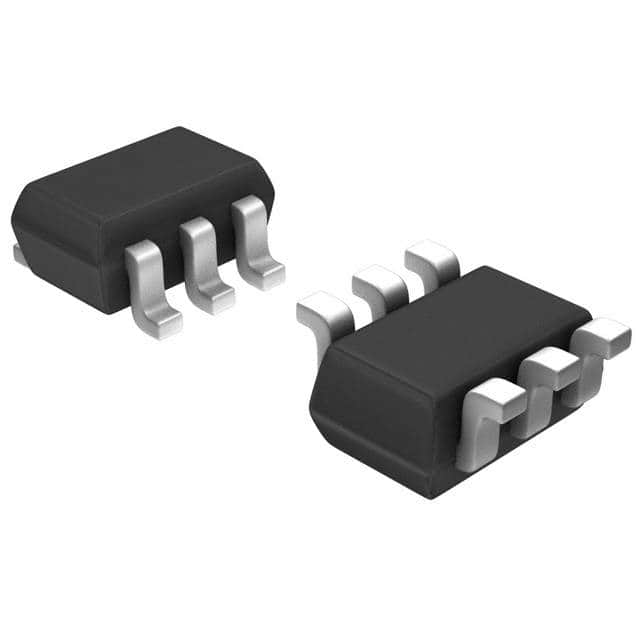Szczegóły produktu można znaleźć w specyfikacjach.

HSMS-282L-TR1
Introduction
The HSMS-282L-TR1 is a high-performance Schottky diode designed for use in various electronic applications. This entry provides an overview of the product, including its category, use, characteristics, packaging, specifications, pin configuration, functional features, advantages and disadvantages, working principles, application field plans, and alternative models.
Product Overview
Category
The HSMS-282L-TR1 belongs to the category of semiconductor devices, specifically Schottky diodes.
Use
It is commonly used in RF and microwave applications, as well as in high-speed switching circuits.
Characteristics
The HSMS-282L-TR1 is known for its low forward voltage drop, fast switching speed, and low junction capacitance, making it suitable for high-frequency applications.
Package
This diode is typically available in a surface-mount package, providing ease of integration into circuit designs.
Essence
The essence of the HSMS-282L-TR1 lies in its ability to efficiently handle high-frequency signals with minimal losses.
Packaging/Quantity
It is usually supplied in tape and reel packaging, with varying quantities based on customer requirements.
Specifications
The key specifications of the HSMS-282L-TR1 include: - Forward Voltage: 0.3V - Reverse Voltage: 15V - Maximum Continuous Current: 1A - Capacitance: 0.6pF
Detailed Pin Configuration
The HSMS-282L-TR1 features a standard SOT-23 surface-mount package with three pins: anode, cathode, and ground.
Functional Features
- High-frequency operation
- Low forward voltage drop
- Fast switching speed
- Low junction capacitance
Advantages and Disadvantages
Advantages
- Suitable for high-frequency applications
- Low power dissipation
- Compact form factor
Disadvantages
- Limited reverse voltage tolerance
- Sensitive to overvoltage conditions
Working Principles
The HSMS-282L-TR1 operates based on the Schottky barrier principle, where the metal-semiconductor junction allows for fast switching and low forward voltage drop.
Detailed Application Field Plans
The HSMS-282L-TR1 finds extensive use in the following application fields: - RF mixers and detectors - Frequency multipliers - High-speed data communication systems - Microwave signal detection and rectification
Detailed and Complete Alternative Models
Some alternative models to the HSMS-282L-TR1 include: - HSMS-286x series - HSMS-285x series - HSMS-281x series
In conclusion, the HSMS-282L-TR1 is a versatile Schottky diode with excellent high-frequency performance, making it an ideal choice for various RF and microwave applications.
[Word Count: 397]
Wymień 10 typowych pytań i odpowiedzi związanych z zastosowaniem HSMS-282L-TR1 w rozwiązaniach technicznych
What is HSMS-282L-TR1?
- HSMS-282L-TR1 is a high-speed, low-power InGaAs PIN photodiode designed for fiber optic communication systems.
What are the key features of HSMS-282L-TR1?
- The key features include high speed, low dark current, and low capacitance, making it suitable for high-speed data transmission applications.
What is the typical application of HSMS-282L-TR1 in technical solutions?
- HSMS-282L-TR1 is commonly used in optical receivers for fiber optic communication systems, as well as in high-speed data transmission equipment.
What are the performance specifications of HSMS-282L-TR1?
- The performance specifications include a bandwidth of several GHz, low dark current, and low capacitance, enabling high-speed data transmission with minimal signal degradation.
How does HSMS-282L-TR1 compare to other photodiodes in its class?
- HSMS-282L-TR1 offers a combination of high speed, low power consumption, and low capacitance, making it a preferred choice for high-speed optical communication applications.
What are the environmental considerations for using HSMS-282L-TR1 in technical solutions?
- HSMS-282L-TR1 operates within specified temperature ranges and is sensitive to electrostatic discharge, so proper handling and ESD protection are important during integration.
Are there any specific design considerations when integrating HSMS-282L-TR1 into a technical solution?
- Design considerations include impedance matching, minimizing parasitic capacitance, and ensuring proper biasing to achieve optimal performance.
What are the potential challenges or limitations when using HSMS-282L-TR1 in technical solutions?
- Challenges may include managing signal integrity at high data rates, minimizing noise, and addressing any compatibility issues with associated electronic components.
Can HSMS-282L-TR1 be used in conjunction with other optical components or devices?
- Yes, HSMS-282L-TR1 can be integrated with other optical components such as lasers, modulators, and transimpedance amplifiers to form a complete optical communication system.
What are the best practices for testing and validating the performance of HSMS-282L-TR1 in a technical solution?
- Best practices include using appropriate test equipment, conducting thorough characterization of the photodiode's response, and verifying its performance under various operating conditions.

